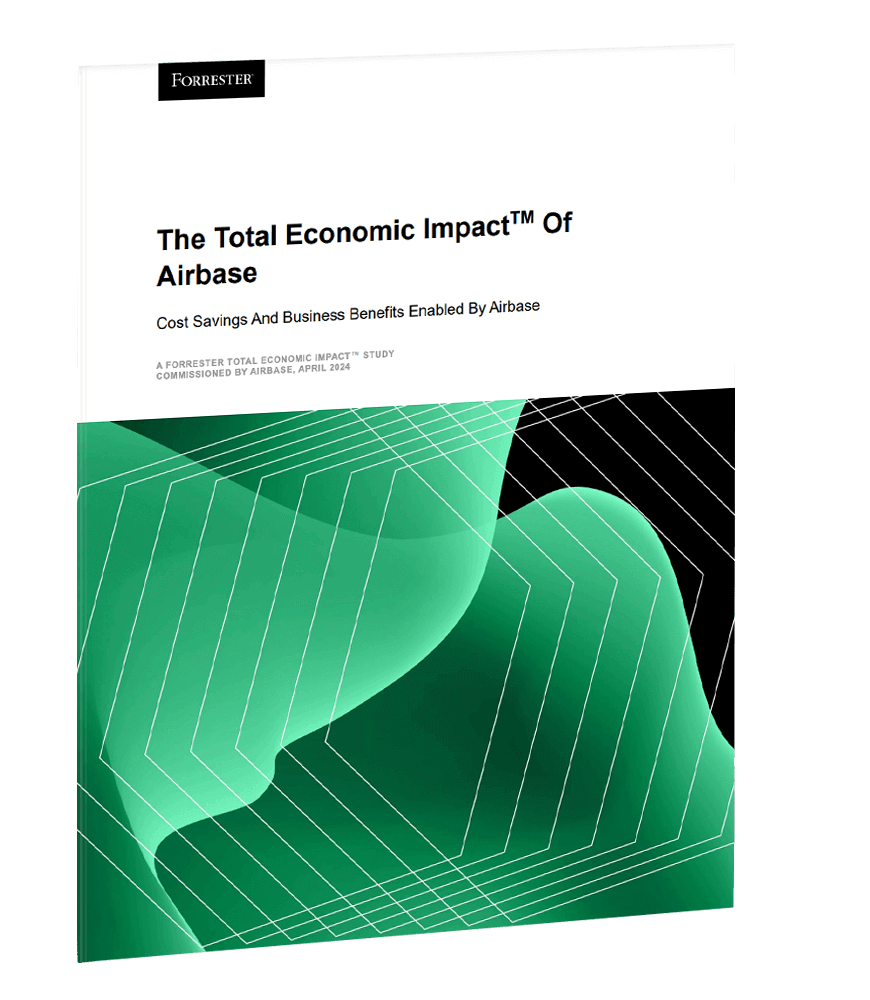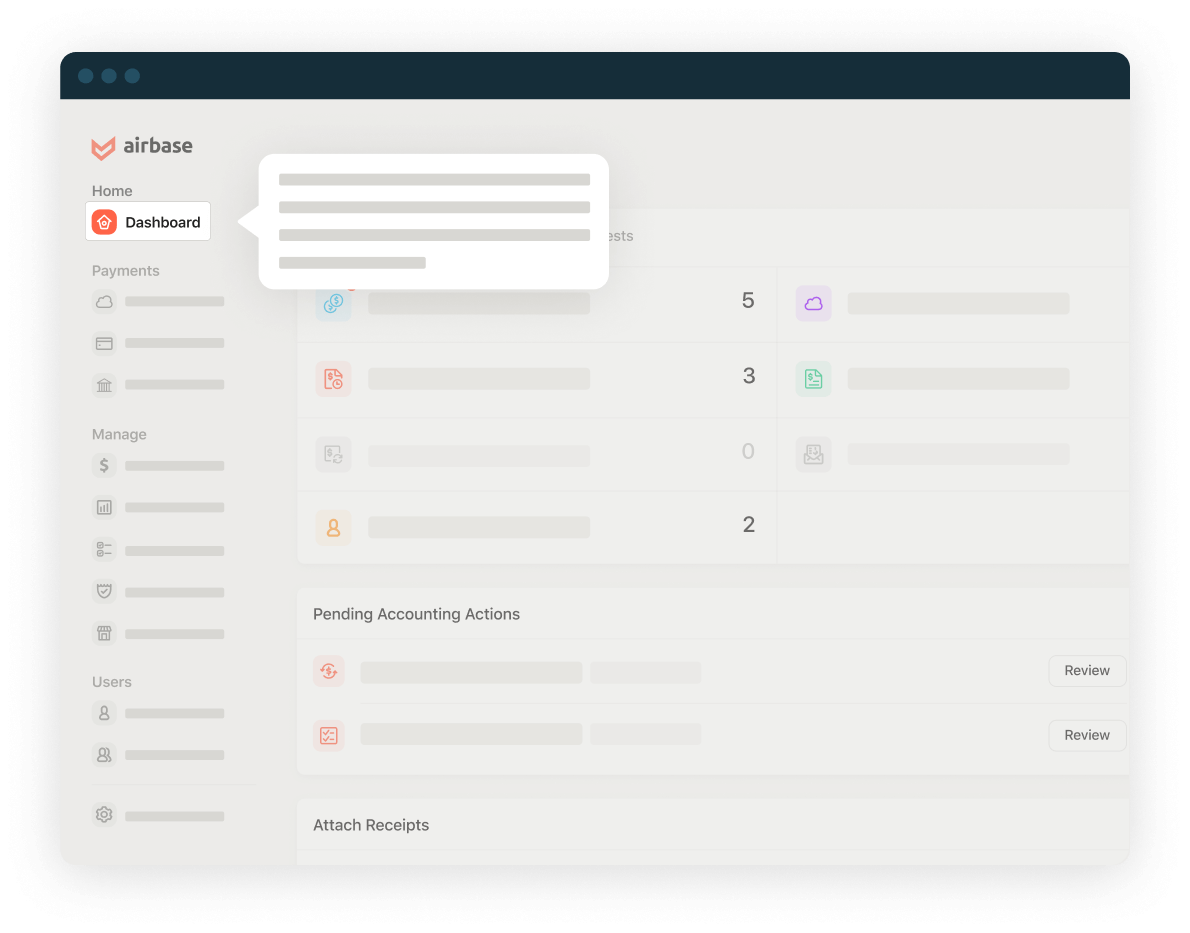Advanced Approval Workflows
Build unique, multilayered approval rules.
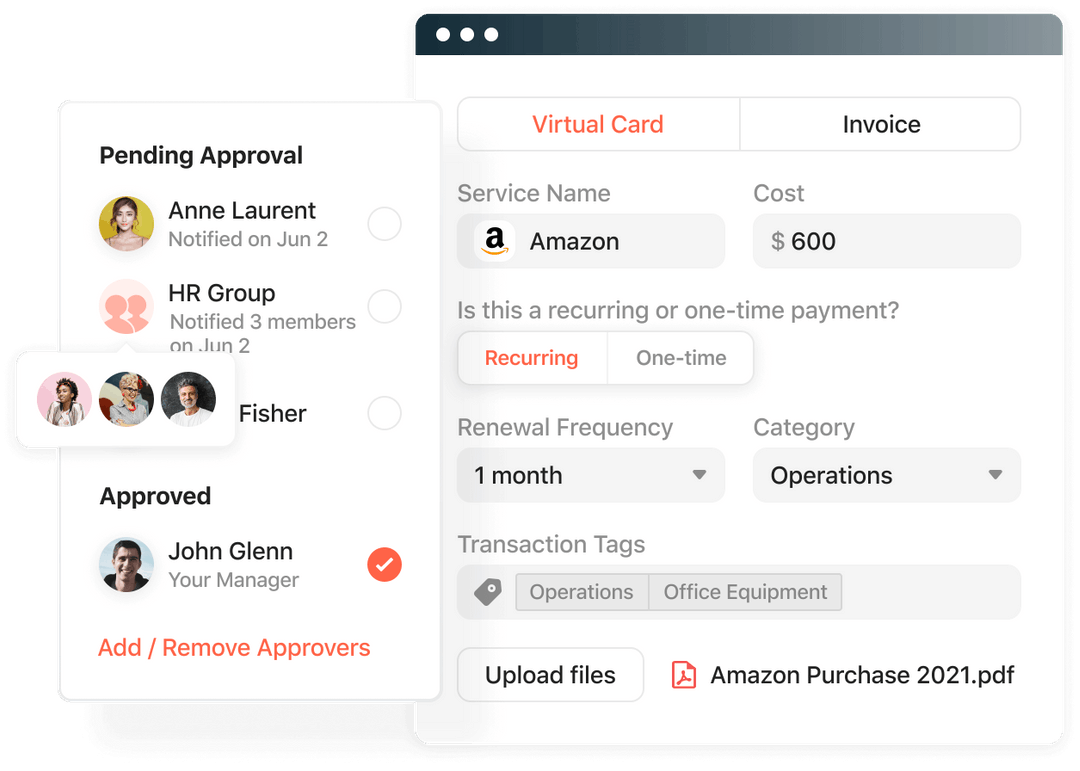
Create custom approval workflows.
Our flexible approval solution allows you to easily create custom rules and automatically route approvals to one or more approvers, in any sequence, that reflects your policy. These rules can be adjusted and changed as the needs and structure of your company changes.
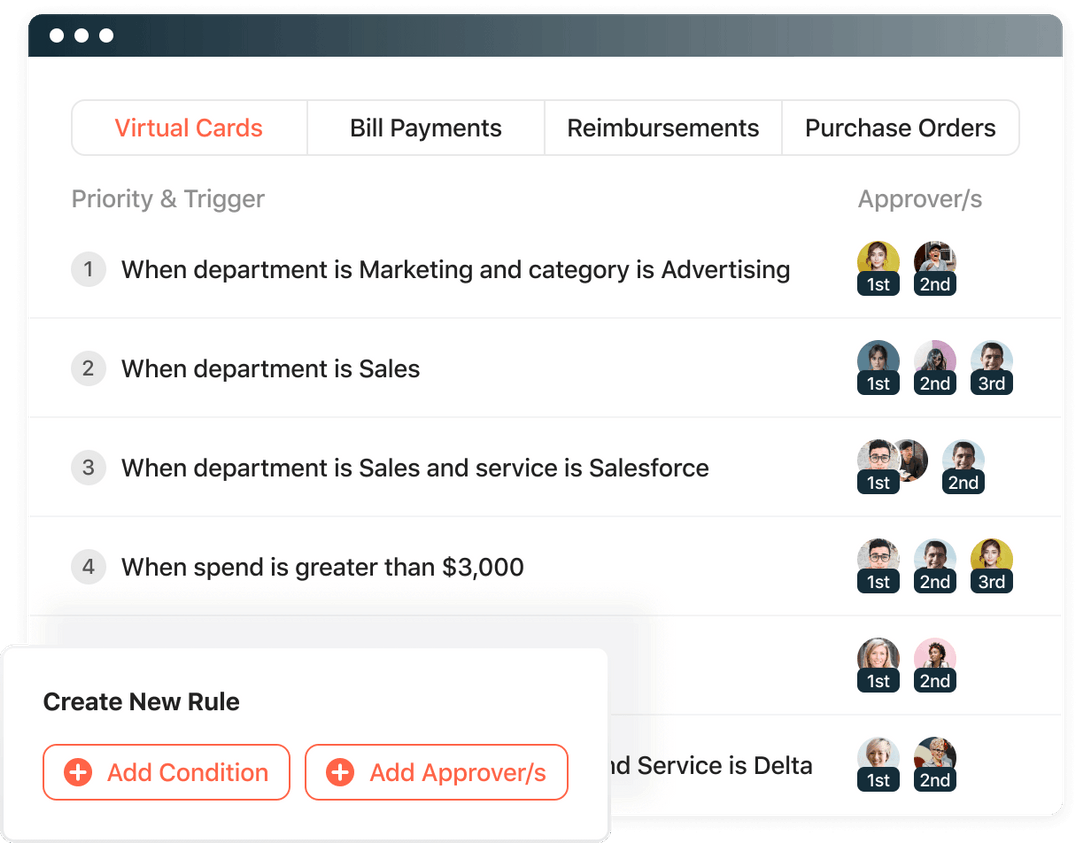
Set simple or complex rules tied to types of spend, departments, locations, requesters, and more.
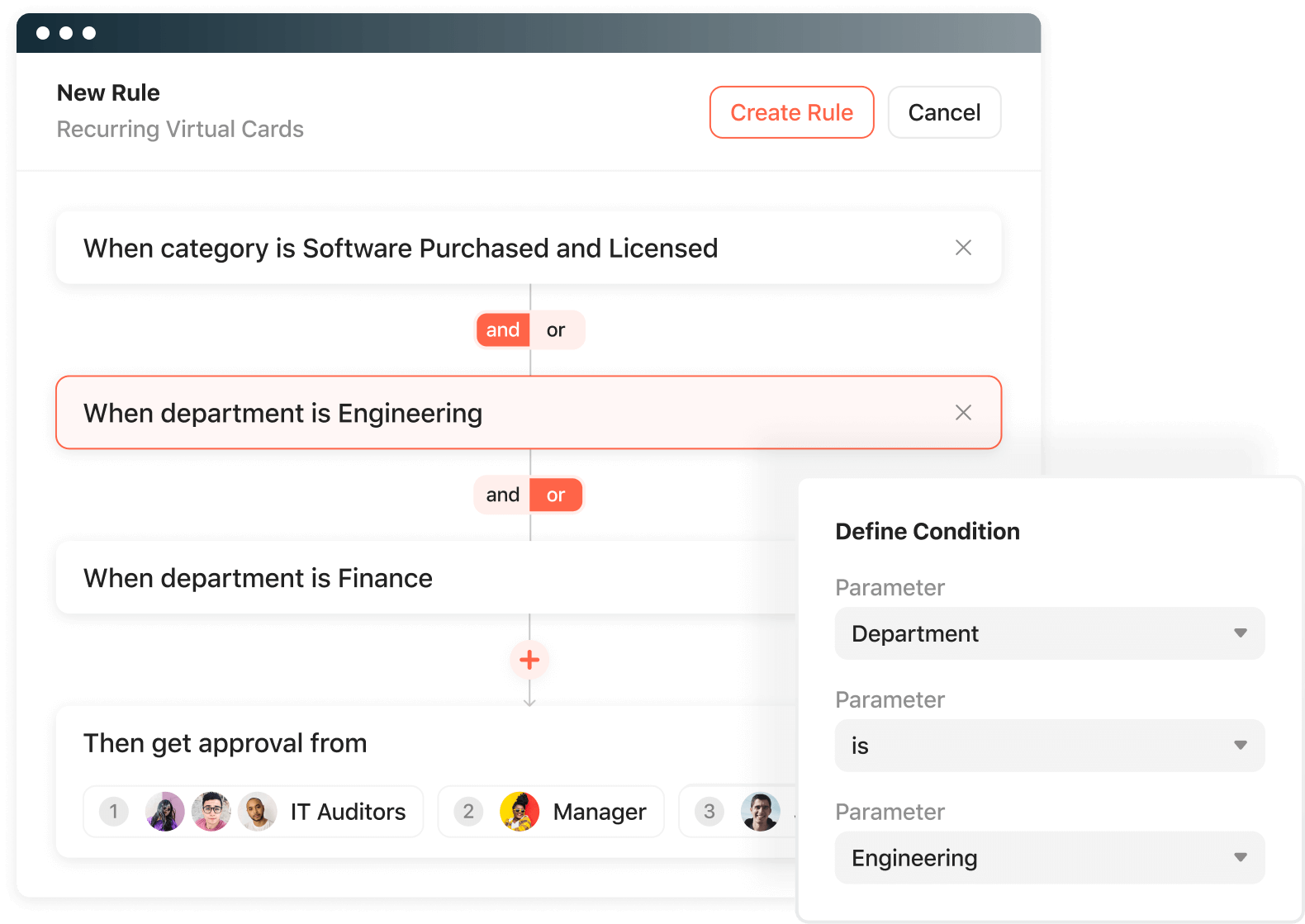
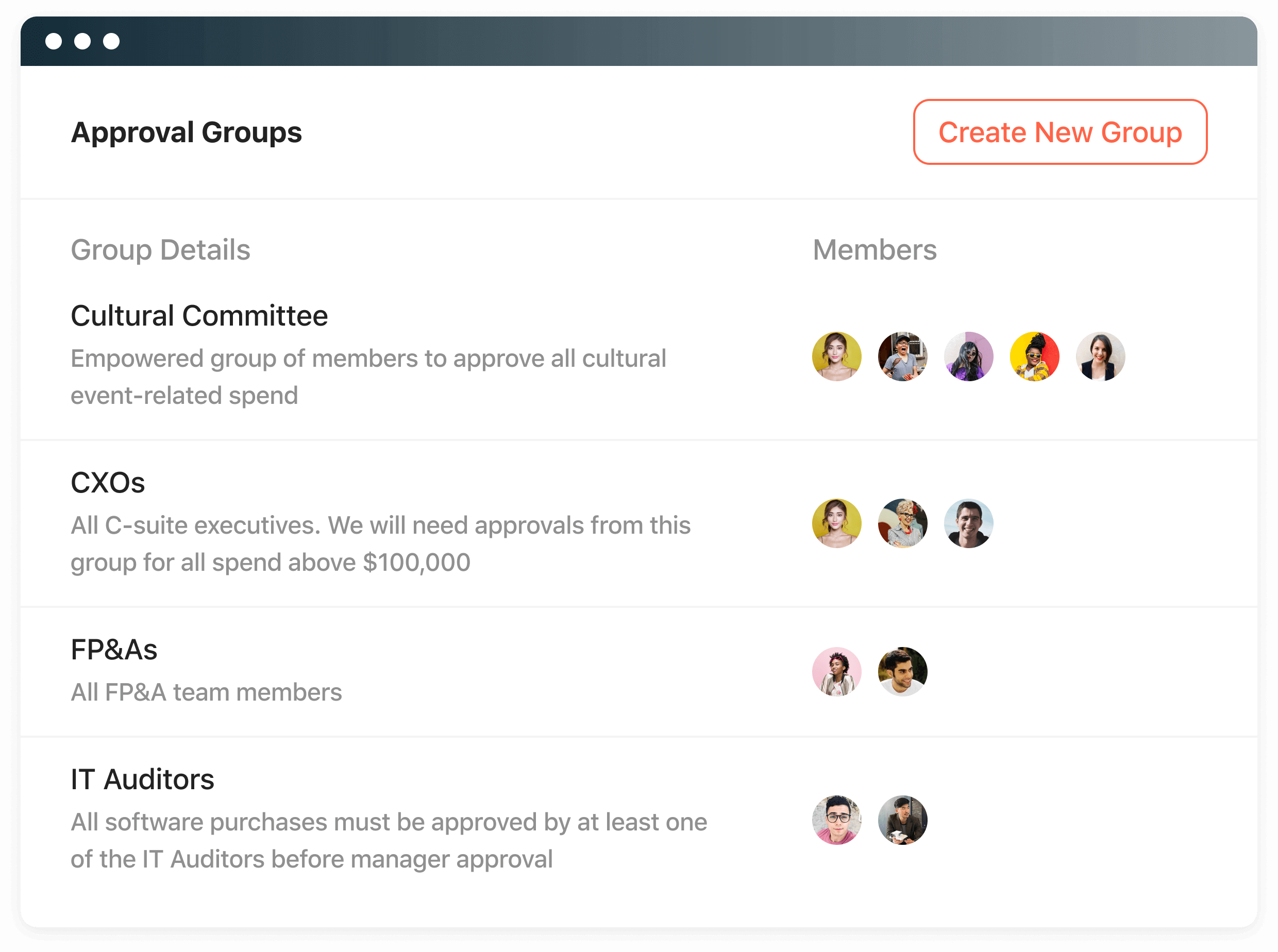
Approval groups.
Build in contingencies for automatic re-routing — to next in line if one approver is not available — to keep teams moving.
Tie approval flows to any one of several criteria.
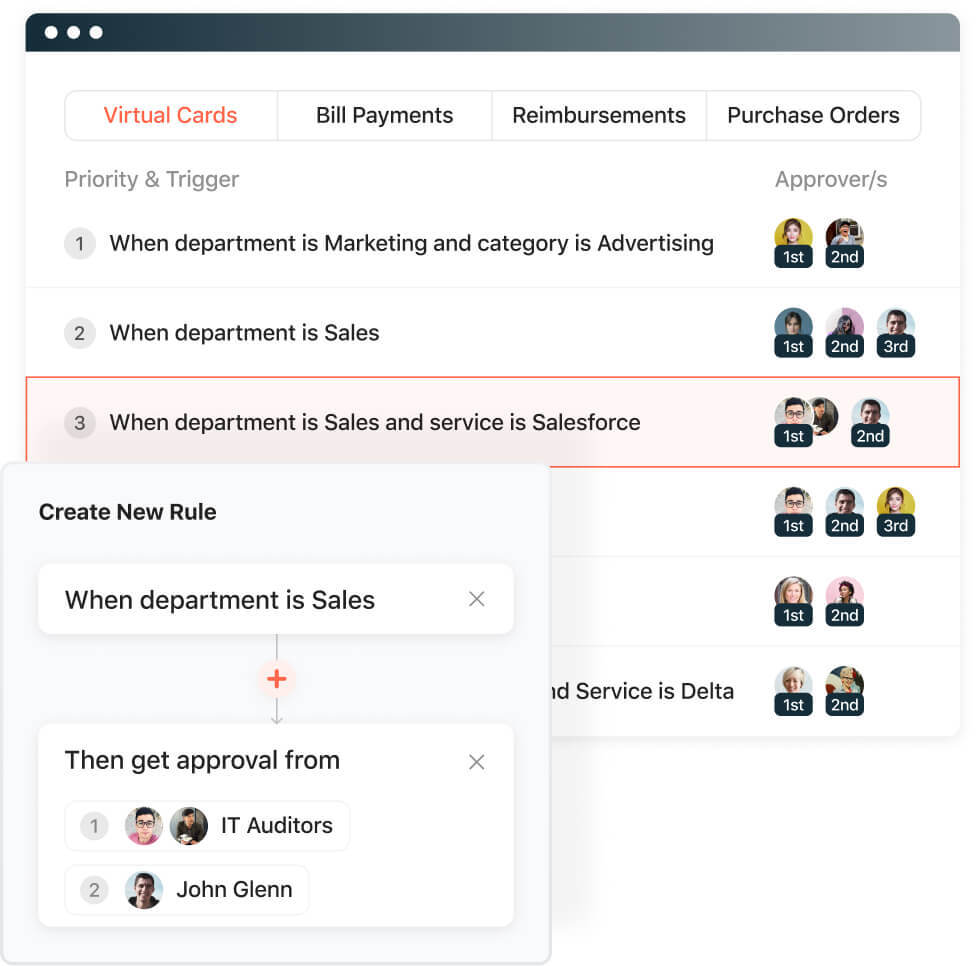
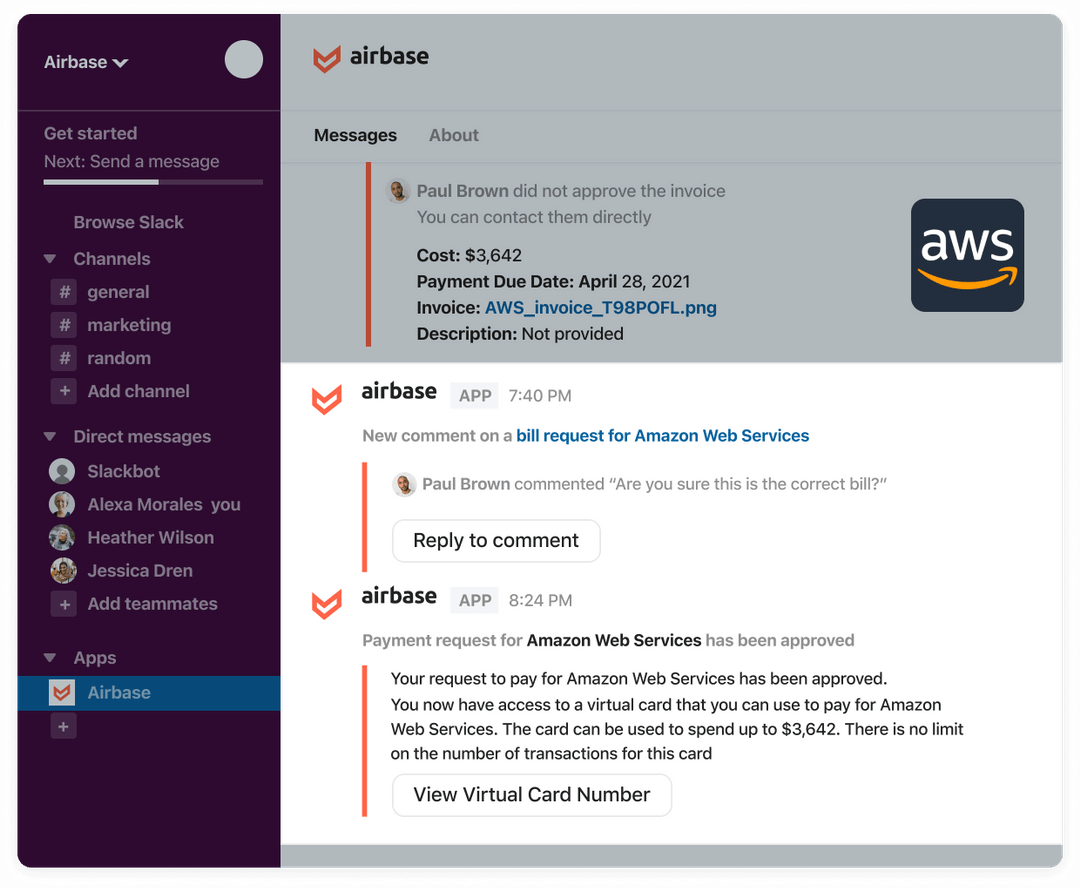
Conduct workflows through Slack, email, or the app itself.
Collaborate easily with @Mentions.
Tag your team members in comments to quickly receive clarifications, feedback, and answers required to keep spending safe and efficient. @Mentions helps you speed up your approvals and consolidate all your spend conversations in one place. Never piece together communications about a transaction from Slack or email again. Capture and organize all correspondence about a transaction in one place for an effective, clear audit trail.
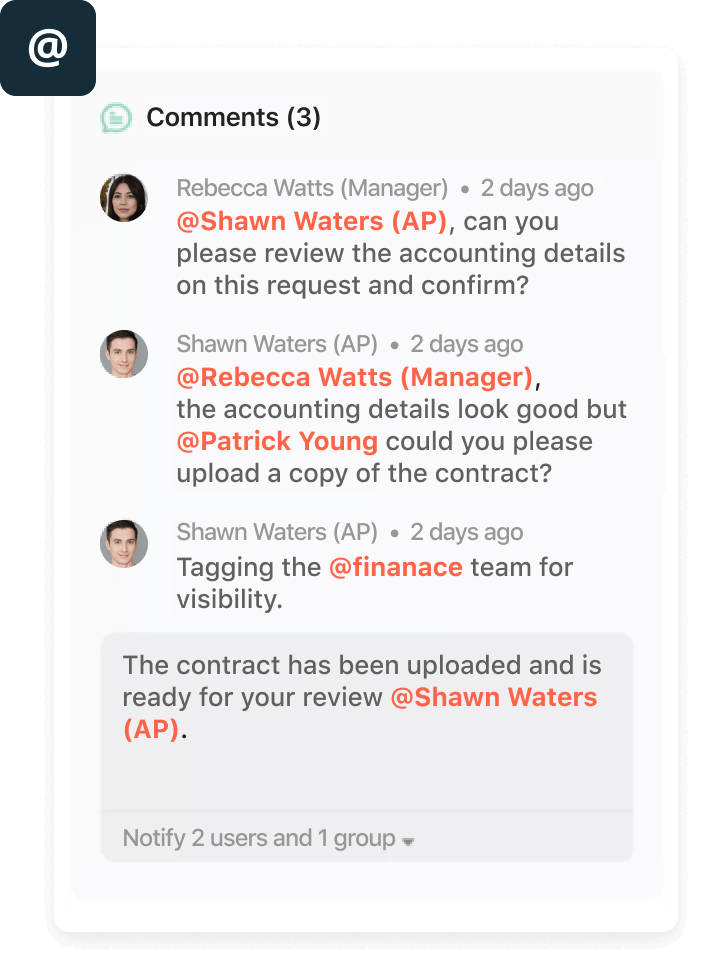
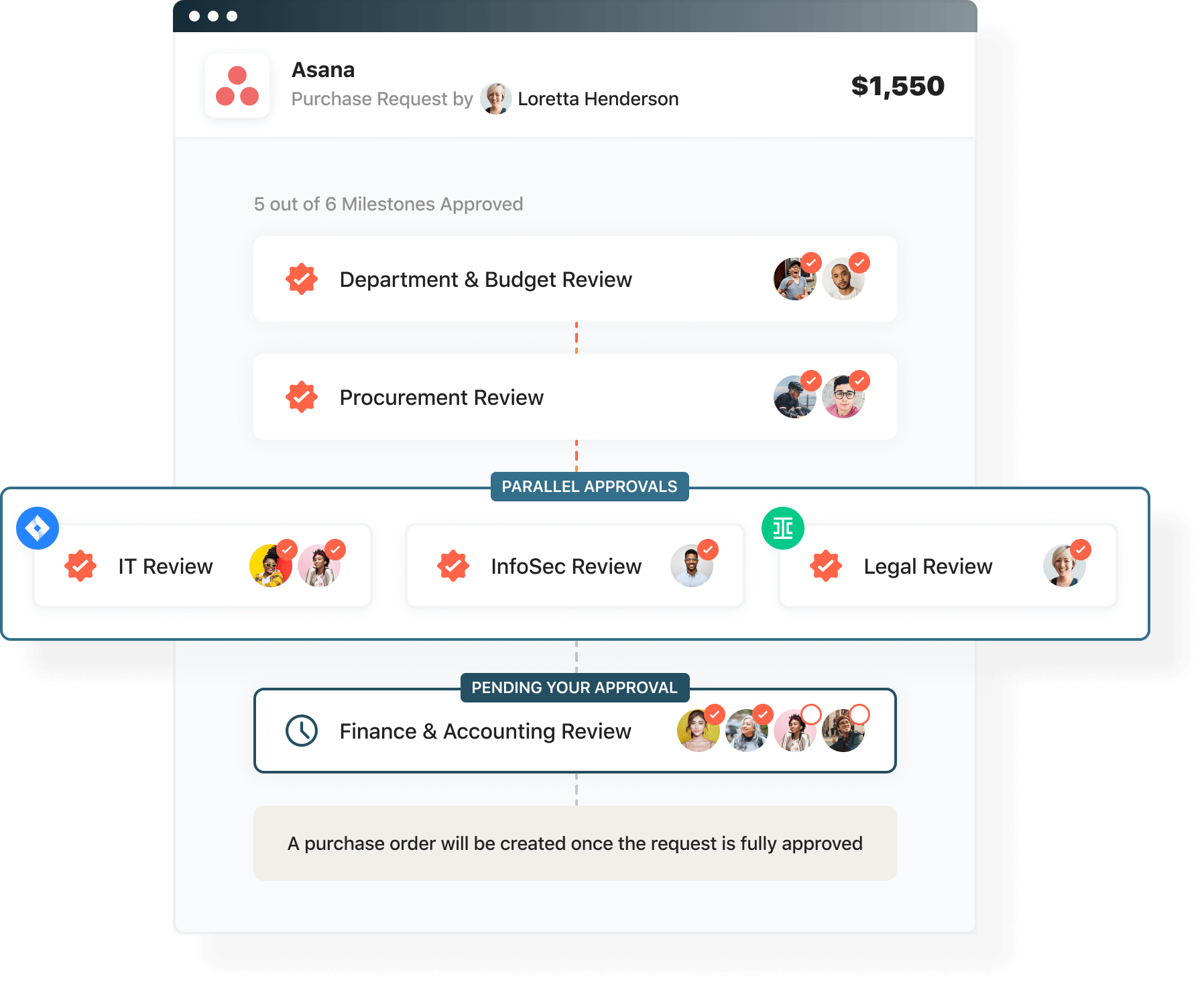
Combine advance approvals with Guided Procurement.
Beyond approvals, Guided Procurement provides direction to employees on the information and documentation requirements for all stakeholders. For example, before approving a transaction, IT may require a SOC report. Guided Procurement lets you add this additional requirement so that an employee knows to collect it from the vendor and automatically route it to the Stakeholder’s system.
Advanced approvals — compliance made simple.
Automated approval workflows.
Automatic audit trail.
Control with pre-approvals.
Efficient by design.


Shifting from Traditional to Rule-based Policies
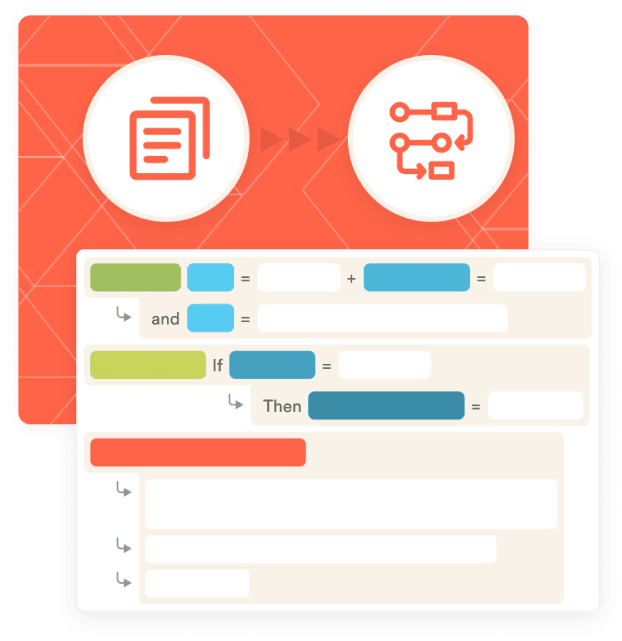
 Jira Integration – Streamline Your Workflows
Jira Integration – Streamline Your Workflows  Ironclad Integration – Simplify Legal Operations
Ironclad Integration – Simplify Legal Operations  Asana
Asana 